
Don't fall into the trap of thinking that tiles are just for bathroom walls or a kitchen splashback; these unique ways to use tiles around the home capitalise on both their decorative potential and inherent durability.
Whether you're looking for ways to breathe new life into your kitchen tile ideas, are hoping to refresh your bathroom or want to reinvigorate a utility, tiles offer so much more than just a pretty pattern. Using tiles in unique ways will also add texture and depth to your interior schemes.
Pretty much any flat surface – so long as it has been prepared correctly – can be tiled. This opens up a world of untapped potential. Tiles are also available in a range of different sizes, shapes and textures, meaning there is a tile for every space in the home.
1. Take tiles inside cabinetry
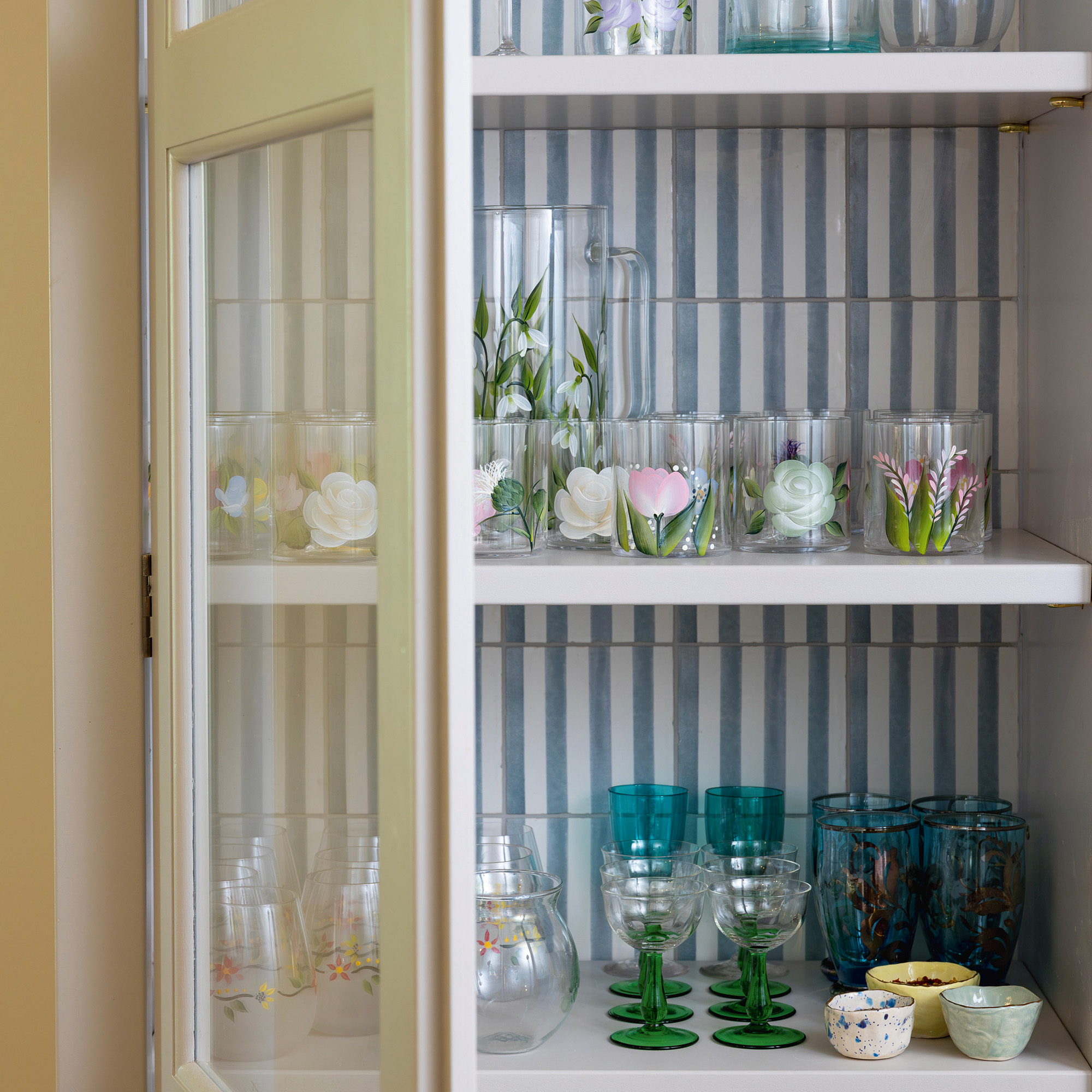
Dressing the walls of a kitchen with decorative tiles instead of wallpaper isn’t a new idea, but applying this mentality to other areas of the kitchen can really elevate the space.
There has been a recent trend for wallpapering the back of glazed cabinets as a way to bring unexpected interest, but tiling this area offers a more durable alternative, especially in a kitchen.
Channelling the striped tiles trend, Petra Palumbo’s Pinstripe ceramic tile has a beautiful gloss finish which reflects light into the cupboard and illuminates the interiors. This is particularly effective when using the cupboard to display decorative glassware, such as seen here (also by Petra Palumbo).
2. Create harmony with mosaics
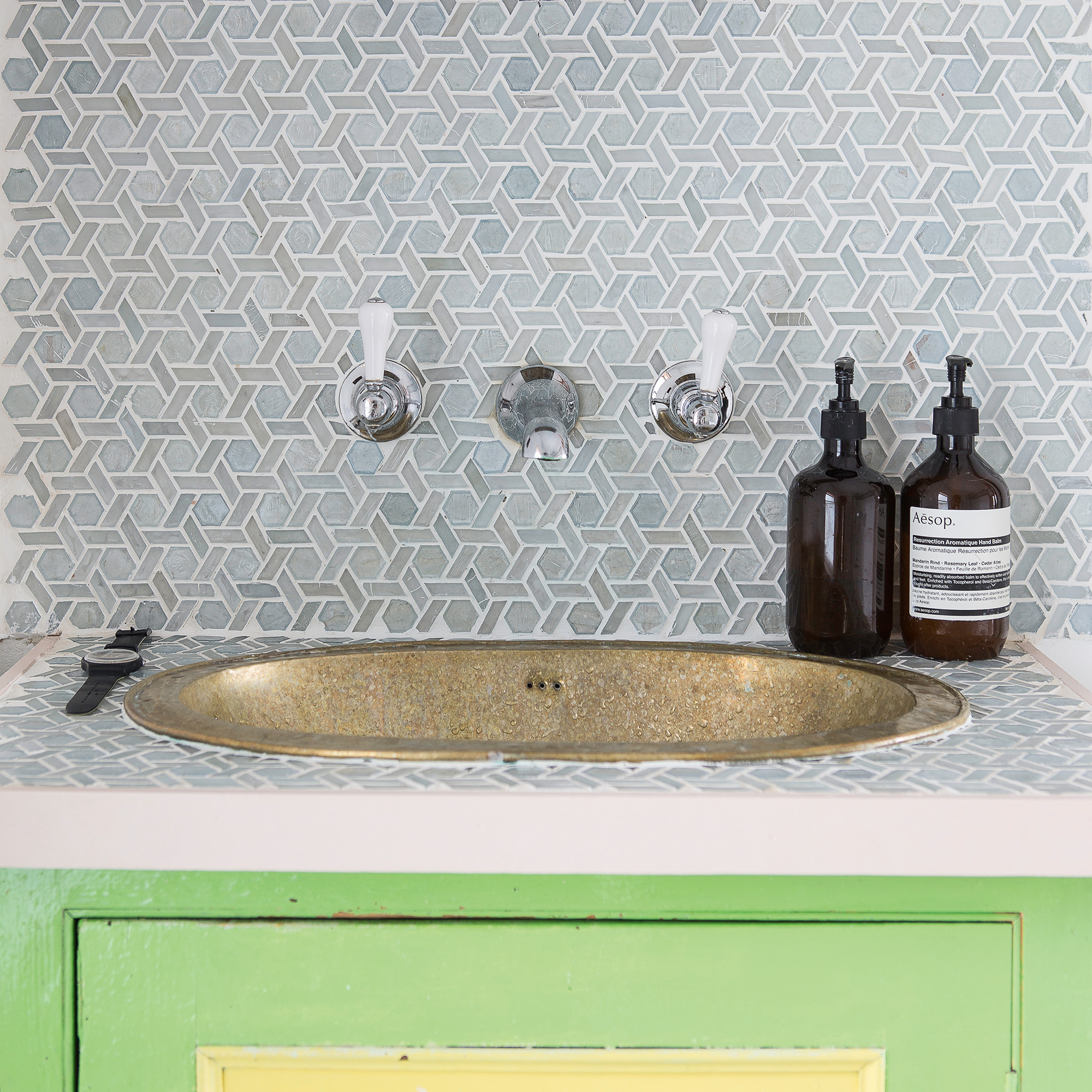
While tiling splashbacks don't count as unique ways to use tiles around the home, consider carrying the tiling onto your countertop, as seen with mosaic design. This ensures there’s no competition between the two surfaces and lets you enjoy the intricacies and tactility of each piece up close.
Mosaics are the epitome of small bathroom tile ideas and a luxury choice. Whether made from glass, porcelain or marble, they are time-consuming to install and, as such, carry a higher price tag than traditional wall tiles.
With something that’s such an investment, you want to make sure it’s the star of the show. Rather than using mosaics across the entire wall, use them to create a statement splashback – accentuated with chrome wall taps, an antique mirror and an impressive gold sink, as seen here.
3. Match tiles and wallpaper for a seamless look

A seamless use of pattern is a beautiful way to bring harmony to a space, but it can seem impossible in a bathroom, especially if you want to combine a decorative bathroom wallpaper with practical tiles.
However, using the same pattern on both tiles and wallpaper lets you achieve your pattern-drenching dreams.
‘Balance is a vital component when working with unusually shaped rooms or those with specific zones,' explains designer Emma Ainscough.
'Here, to ensure the sense of flow carried into the shower enclosure, I opted for wallpaper and shower tiles in a similar striped design and the same colour palette. ‘The stripe is fresh and timeless, while also giving the room height as we took the print up and onto the ceiling.’
Fully embrace the effect by continuing the striped wall tiles onto the bathroom floor, which can also make a small bathroom feel bigger.
4. Channel spa-style with wood-look tiled cladding
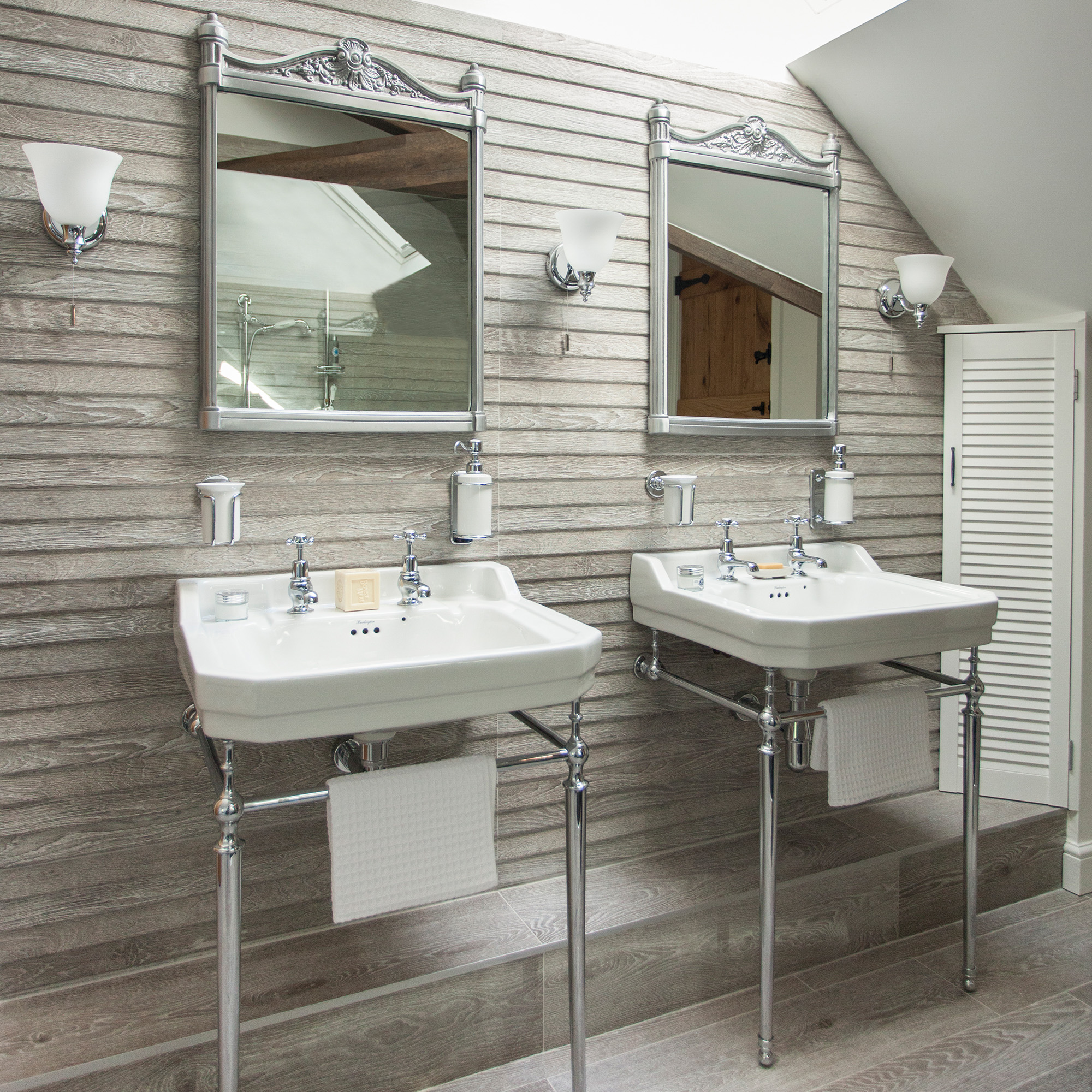
Wood-clad walls and wooden flooring are an effortless way to channel a spa-like ambience in a bathroom. While this is achievable with waterproof MDF wall panelling and engineered flooring in drier areas, it is a no-go in shower enclosures or wet rooms.
Wood-look tiles offer the perfect solution, allowing both walls and floors to be dressed in the same material and resulting in a high-end, seamless look. When choosing wood-look tiles, seek out designs based on high-definition images so you can see the grains and knots within the original wood. Also, look for those that have a tactile finish.
5. Add personality with coloured grout
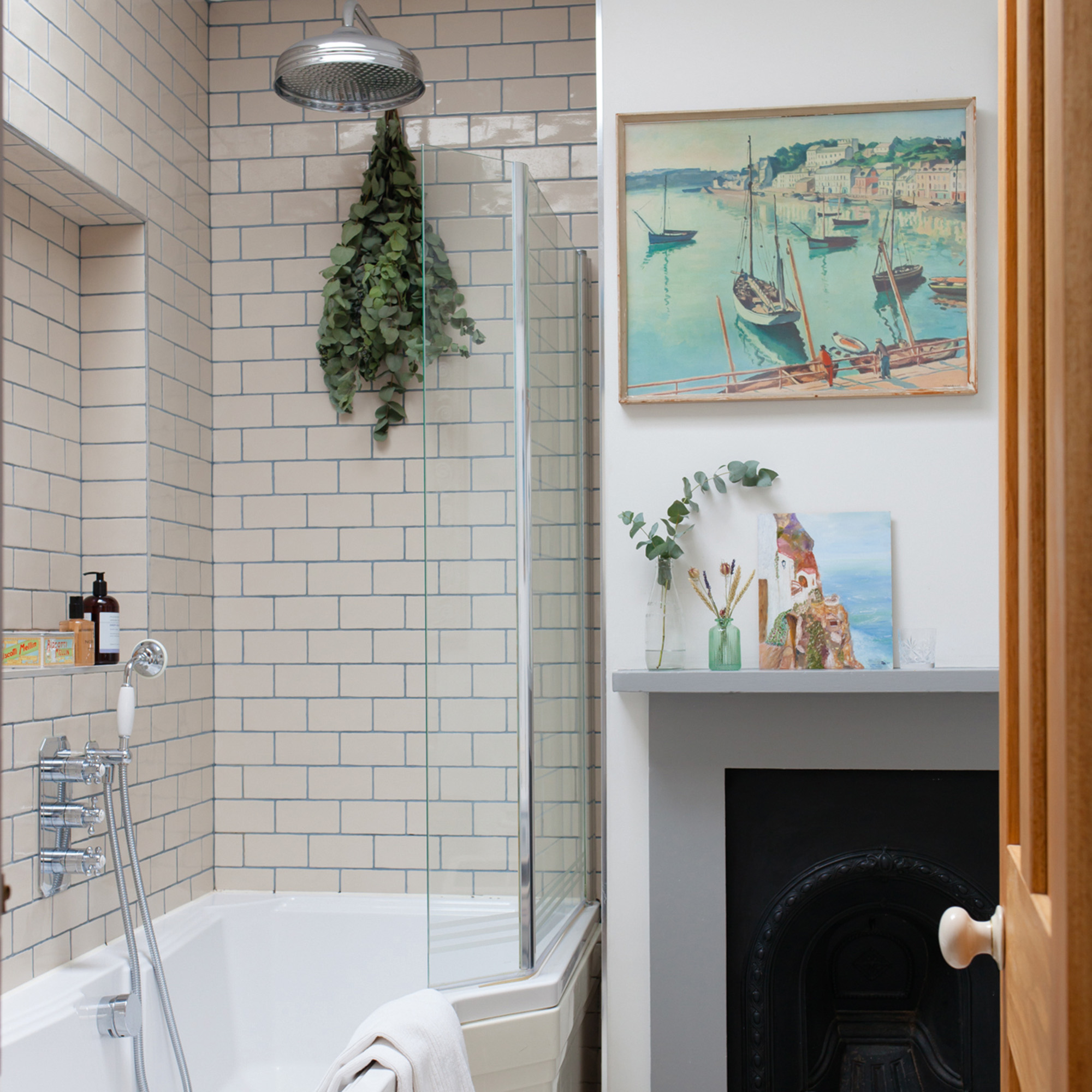
Grout, often dismissed as nothing more than a way to join and strengthen the tiles, deserves as much consideration as they do. Grout is available in a rainbow of colours – with even glitter finishes available on Amazon – and can transform previously understated tiles into something special. Learning how to grout wall tiles is a surprisingly easy way to add interest and character to your space.
Here, Mapei Ultracolor grout in Space Blue from B&Q, creates a feature of the cream metro tiles, drawing the eye and providing a sense of harmony with other elements in the room.
6. Mix and match sizes and shapes for a feature wall

Zellige tiles are steeped in history, originating in Morocco sometime between the 10th and 13th centuries. Today, the tiles are still crafted using the same ancient techniques, with each clay tile individually moulded and handcrafted, meaning every one is unique. If installing zelliges in your home, James Sirett, director of product at Fired Earth, recommends blending tiles before installation.
‘Never install zellige tiles directly from the box. Instead, lay out all the tiles with even distribution of colour and imperfections.’ Featured are the Medina designs from Fired Earth in collaboration with Bert & May.
7. Add interest with an unusual laying patterns
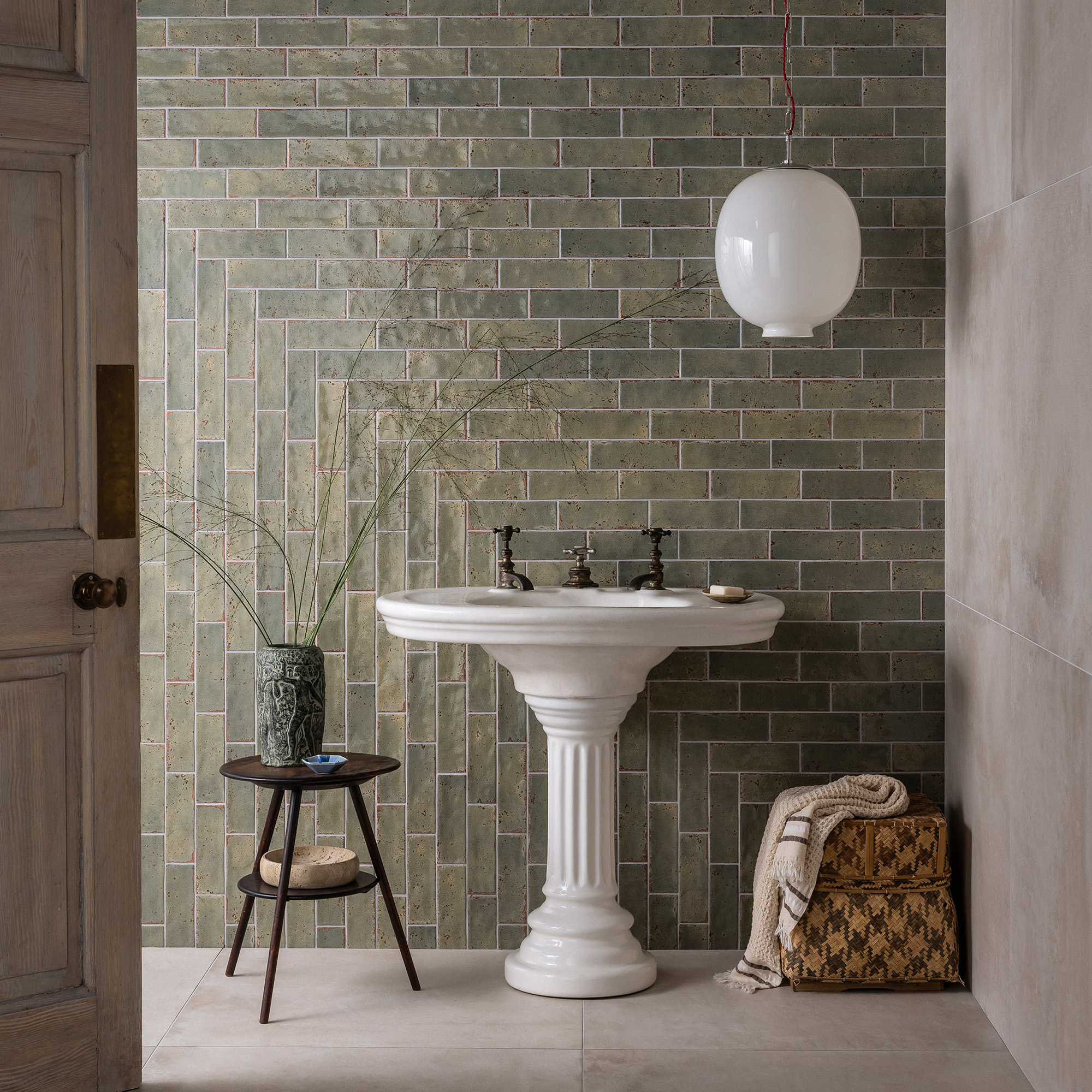
Metro tiles are a classic choice for rooms of all styles and homes of all ages. Not only can they carry an endless array of colours and glazes, but they also offer versatility in terms of tile layout patterns. Traditional brick-bond laying patterns typically make
a space feel longer, while a vertical laying pattern emphasises the room’s height.
‘Mixing vertical and horizontal metro tiles in a herringbone-type layout creates a visual journey. The vertical lines elongate and elevate, while the horizontal ones ground and expand, resulting in a space that feels both structured and fluid,’ says Louisa Morgan, creative director at Mandarin Stone.
If opting for a decorative laying pattern, choose more neutral tiles like Mandarin Stone’s Brixton Mint gloss porcelain.
7. Uses tiling to create a divide
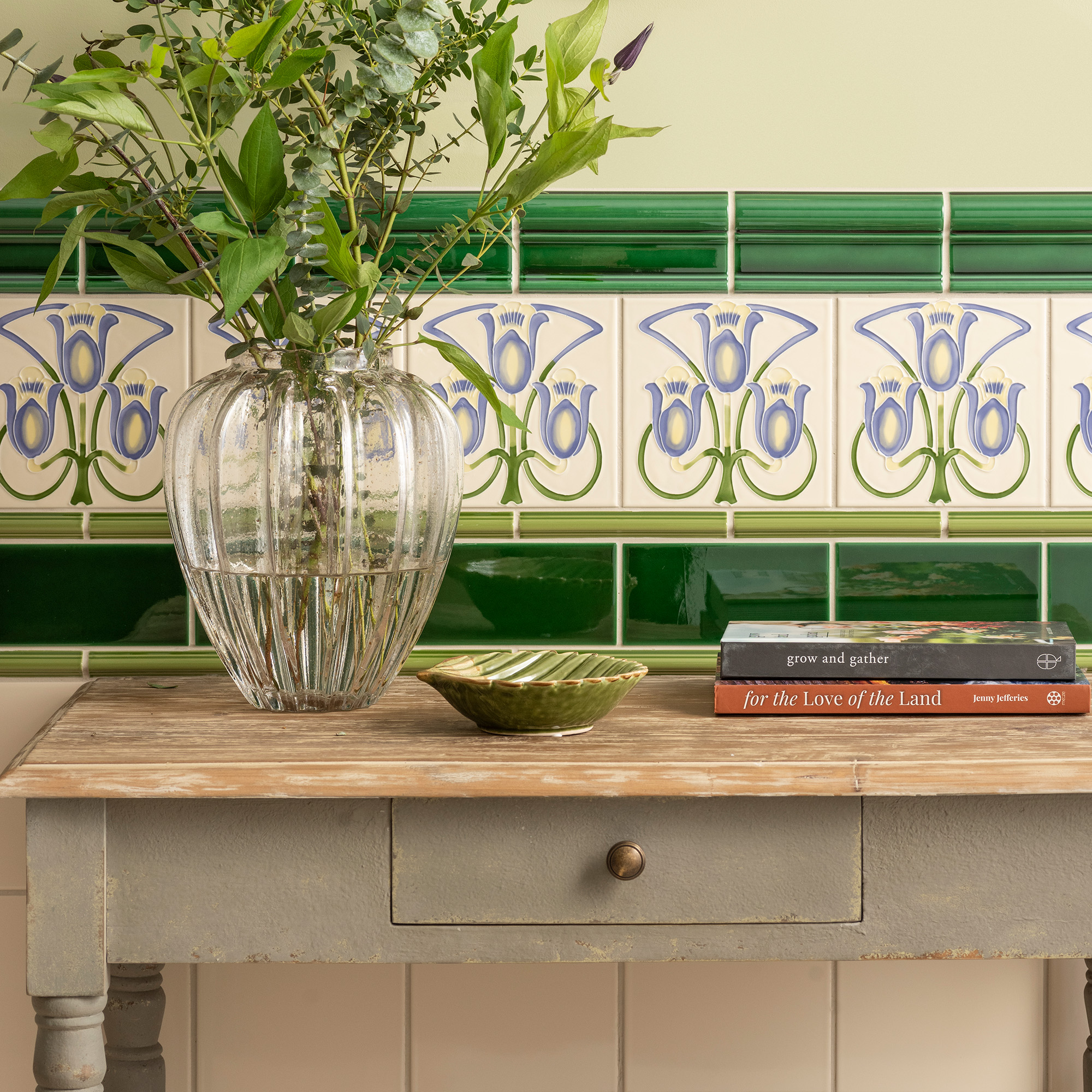
The use of dado rails is typically associated with panelling but can be equally effective with tiles – especially if you want to channel the elegance of classic Victorian design.
‘From the 1870s, porches were tiled to dado height for visitors to admire before admittance,’ explains Becca Keenan, product designer at Original Style. While tiled porches are less common today, the hallway is more than capable of taking up the same decorative role.
8. Bring tiles to a worktop
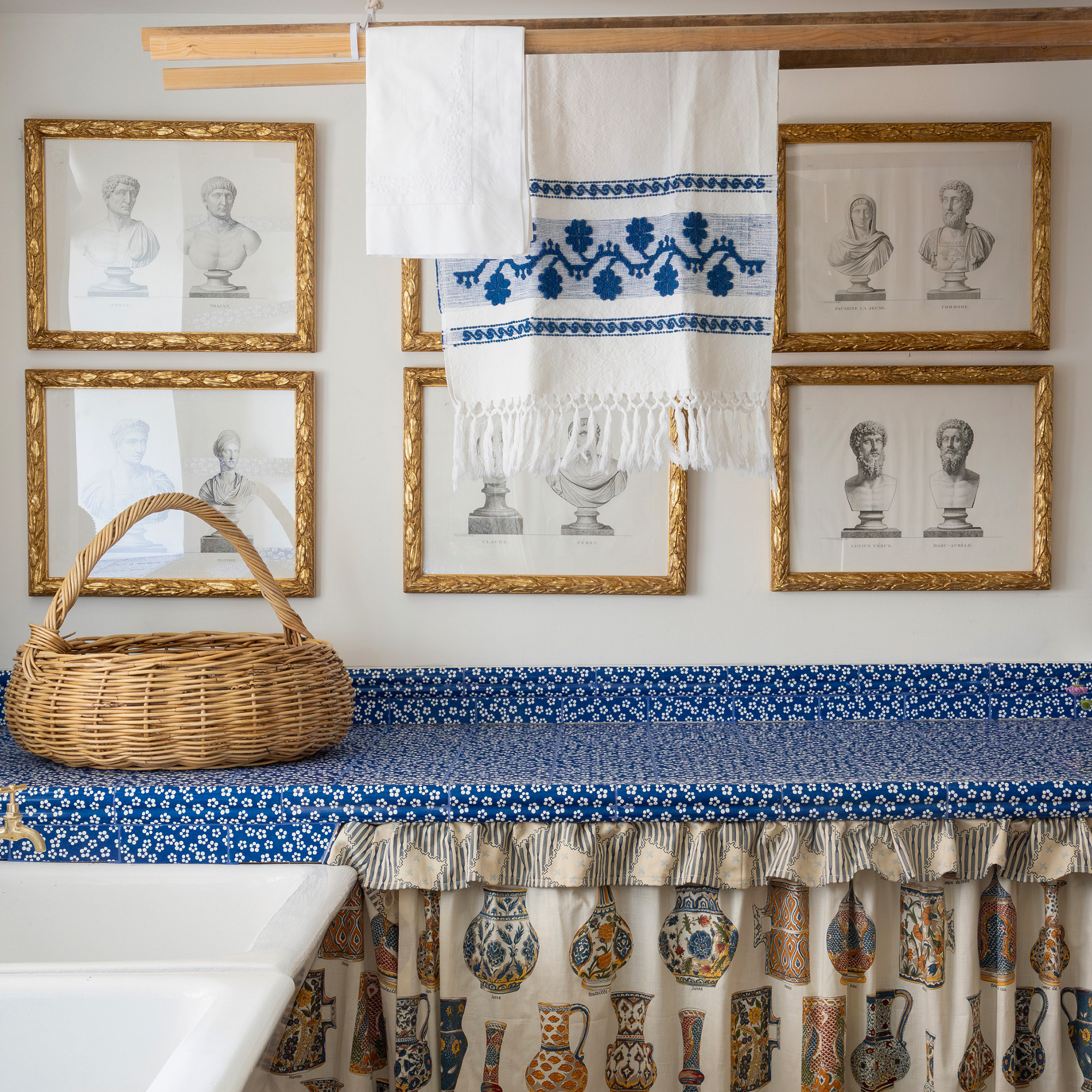
Once popular in the 1970s and 1980s, tiled worktops are making a comeback. Worktops are primarily a functional addition, and they must be hardwearing and easy to clean. However, they can also be the decorative hero of the room, as seen in this beautiful utility room, which features Petra Palumbo’s Ditsy tiles in Navy.
The matching dado trim perfectly frames the upstand and edge for a statement worktop. ‘Our dados have a moulded double lip ’S’ shape with one larger than the other, which carries the print coherently from tile to wall or sink,’ says Petra. ‘The simple repeating pattern and small scale means the Ditsy design automatically enlarges a space – ideal for a small utility.'
'Go full-on matchy-matchy with your scheme or create a maximalist contrast with layers of pattern and contrasting colour.’ When using tiles for a worktop, a heat-resistant ceramic, like that used here, is ideal.
9. Dress up a kitchen island with tiles
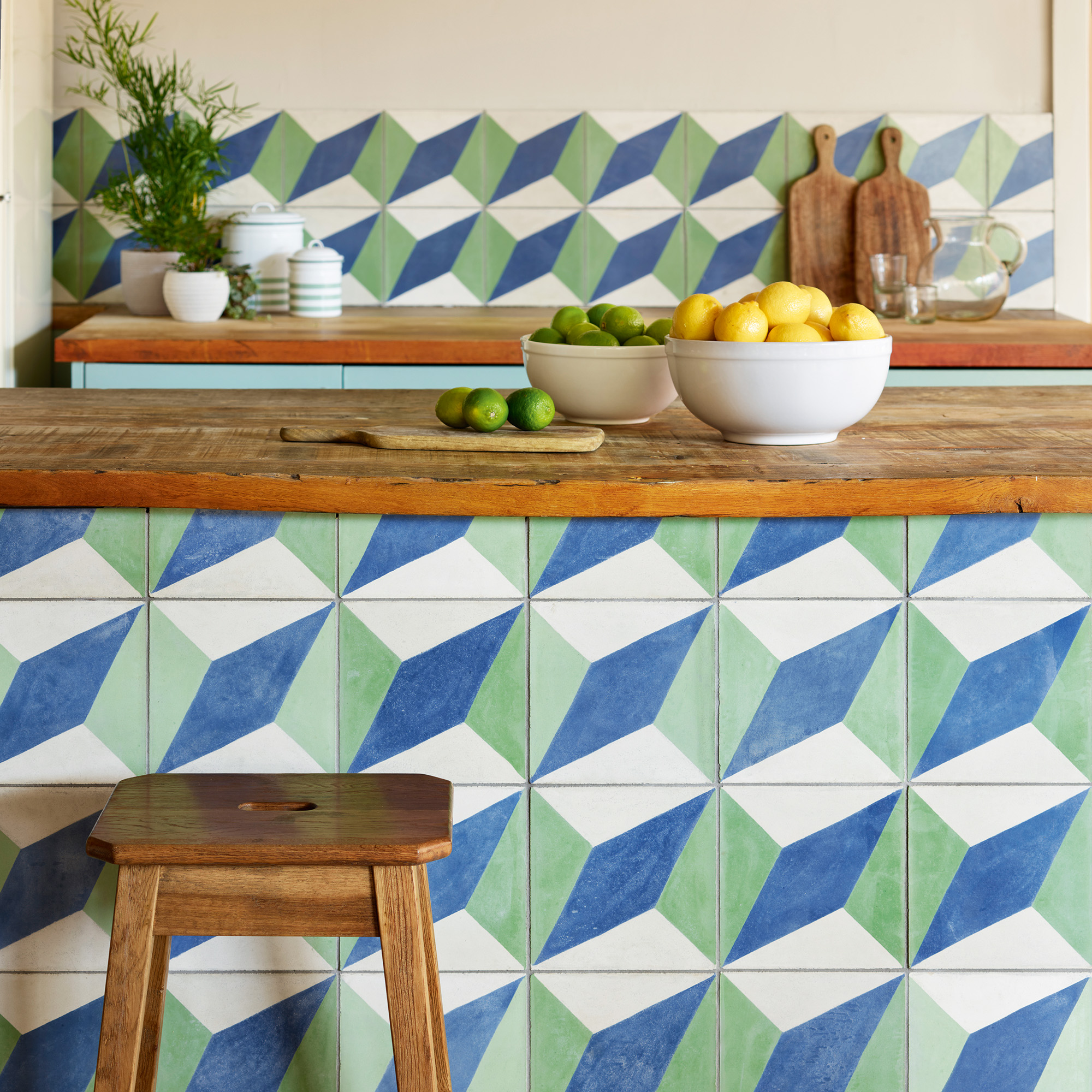
Any empty surface presents the opportunity to add pattern and colour to your kitchen. So, if you've played it safe with walls, floors and cabinetry, create a statement with your kitchen tiling.
The back of a kitchen island is the perfect spot to introduce a bold pattern – like Bert & May's Soho House Redchurch Street Tiles. Create harmony throughout the space by matching the island tiles with the floor tiles or splashback. Alternatively, create a statement with an eye-catching contrast.
An added benefit of this approach is that the tiles will protect the island from spills and scuffs – ideal if you're pairing this space with bar stools.
10. Treat shelves to the tile treatment
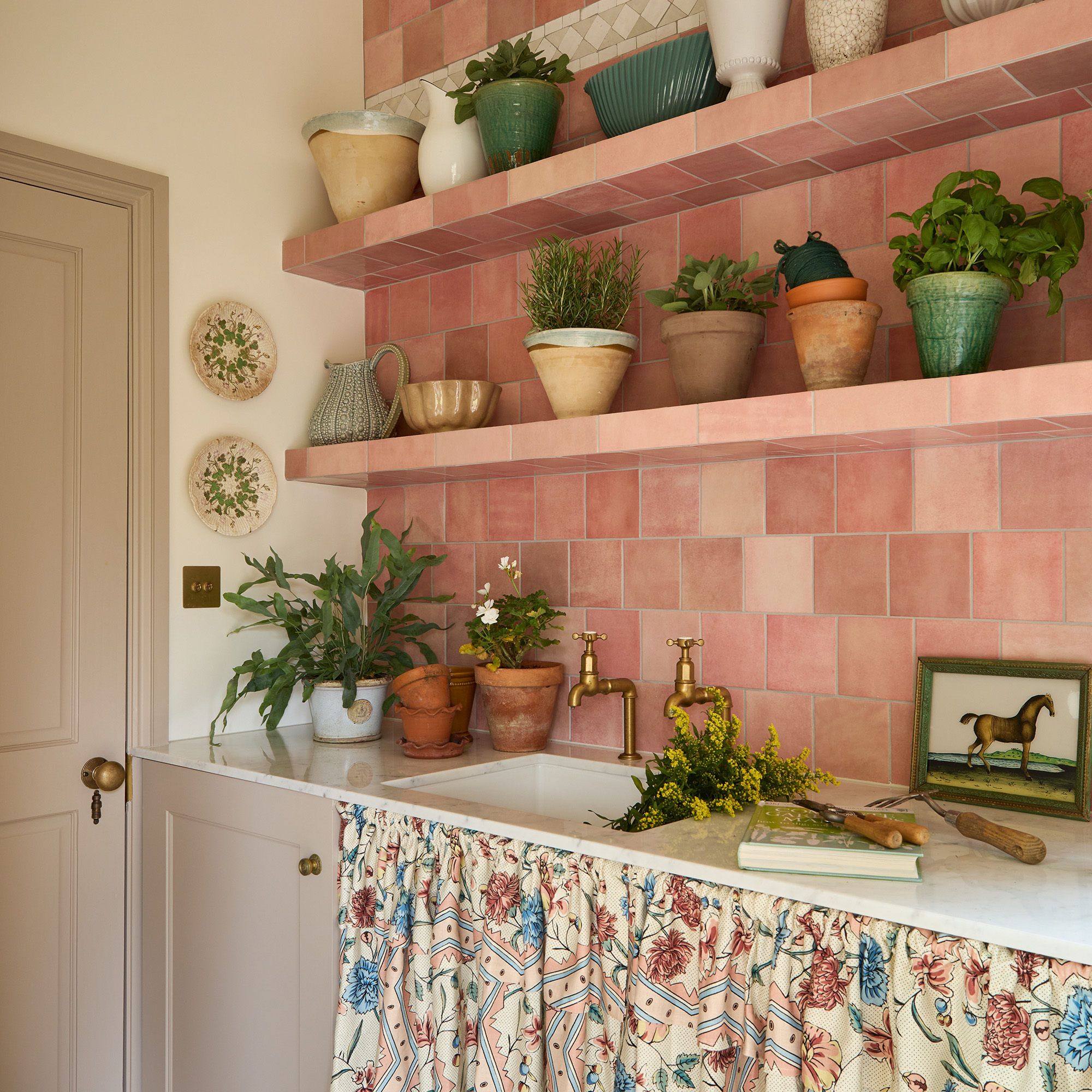
Tiling open shelves is an excellent way to create a sense of harmony, especially when the tiles match the splashback.
'Using pretty glazed tiles to cover shelves in a utility room is a practical way to inject some colour and texture into your utility space,' says Laura Stephens, Interior Designer, who created this space.
'Styling shelves with plants, pretty rattan boxes and storage jars helps to soften the spaces and add some femininity and integrate a practical space into the home.'
Tiles are more durable than painted or stained wood – which is ideal if displaying plants, which can sometimes leave rings.
FAQs
Should you use the same tile throughout the house?
No, you should not use the same tile throughout the house, as it limits the decorative opportunities. Using the same tile in every space will require you to choose a subtle and understated tile – so that it works with every colour scheme.
By using different tiles throughout the house, you can experiment with different colours and textures, and give each room its own identity.
Can tile be used as a countertop?
Yes, tiles can be used as a countertop. Not only are they hard-wearing, but they are often a more decorative option than traditional worktop materials, especially if you choose to continue the same tile onto the splashback.
One concern about using tiles as a countertop is hygiene. If embracing this trend, use a stain and waterproof epoxy resin grout which won’t harbour bacteria. Care is easy, simply wipe down with a spray containing 60g bicarbonate of soda, 2tbsp washing-up liquid and 480ml water.







